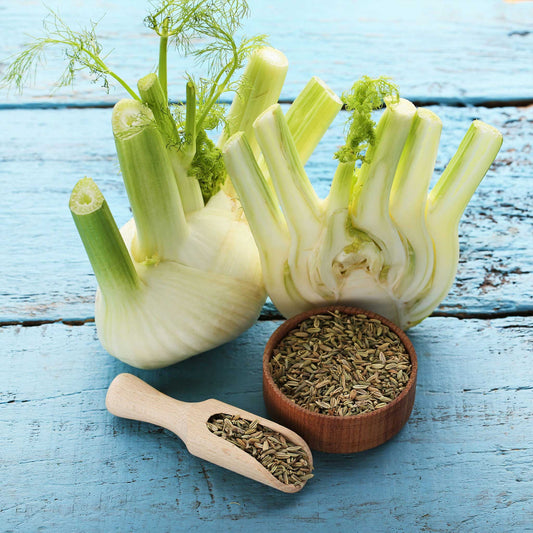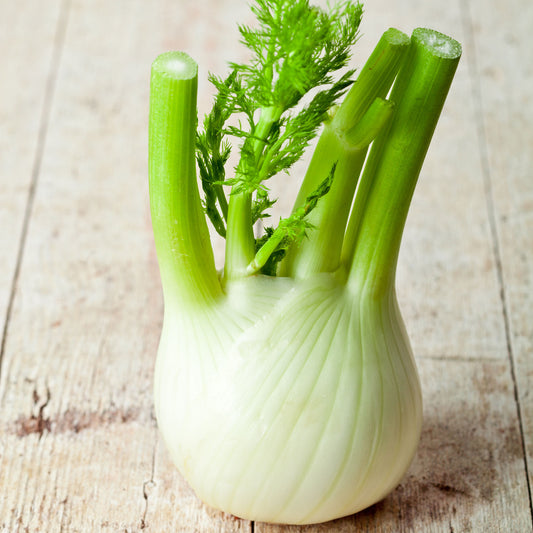-
main-collection-product-grid

Fennel Seeds - Florence
Boasts a mild anise-like flavor, all parts of this herb are edibleFennel Seeds - Florence
Boasts a mild anise-like flavor, all parts of this herb are edibleRegular price As Low As $4.49Regular priceUnit price per -
main-collection-product-grid

Fennel Seeds (Organic) - Florence
Sweet and aromatic, edible from seed to bulbFennel Seeds (Organic) - Florence
Sweet and aromatic, edible from seed to bulbRegular price As Low As $6.29Regular priceUnit price per
Growing heirloom fennel seeds in your garden
- Thrives in bright, sunny growing areas
- Heirloom fennel offers both culinary and medicinal uses
- High in fiber, potassium, folate. Known to support heart health.
- With a mild aniseed flavor, heirloom fennel can be used in a variety of cuisines.
Fennel is an ancient cultivated herb that was highly esteemed by the ancient Romans and Greeks, and is now utilized in modern Mediterranean cuisine and beyond. The fennel plant's foliage, fruits, and bulb are all employed in a variety of cuisines and culinary traditions around the world. It's one of the most important spices in Kashmiri cuisine, and it's used in a variety of spice blends. One of the most prominent tastes in Italian sausage is fennel. Herbal tea, toothpaste, licorice powder, and more are all made with it! Fennel is edible in all parts, from the bulb to the blooms. Raw fennel has a celery-like texture and a licorice flavor that pairs well with bright salads. Cooked fennel takes on a sweeter flavor as it softens and caramelizis. Fennel can be braised, roasted, sauteed, grilled, or eaten raw.
Bonus! Not only is heirloom fennel incredibly versatile and delicious, but it's also full of nutrients. It's high in dietary fiber, vitamin C and potassium, just to name a few.
Choose a location with wet, well-draining soil and full sun to grow heirloom fennel seeds. Because fennel might stunt the growth of beans and tomatoes, don't put them too close together. Soak the fennel seeds in water for a day or two before planting to improve germination. Sow the seeds directly in rows 10 to 12 inches apart, with a 13-inch gap between rows. In most cases, seeds germinate in one to two weeks. Thin out the seedlings to a spacing of 12 to 18 inches once they reach about six inches in height.
Though the plant can produce seeds as well as a vegetable, you can't get both from each individual plant. You have to harvest the bulb before the plant goes to seed. So if you want to use your fennel for all its uses, you'll need to grow a few plants to take advantage of its versatility.
For more information about planting, growing, and caring for heirloom fennel seeds, see the Fennel Seed Planting Guide.

